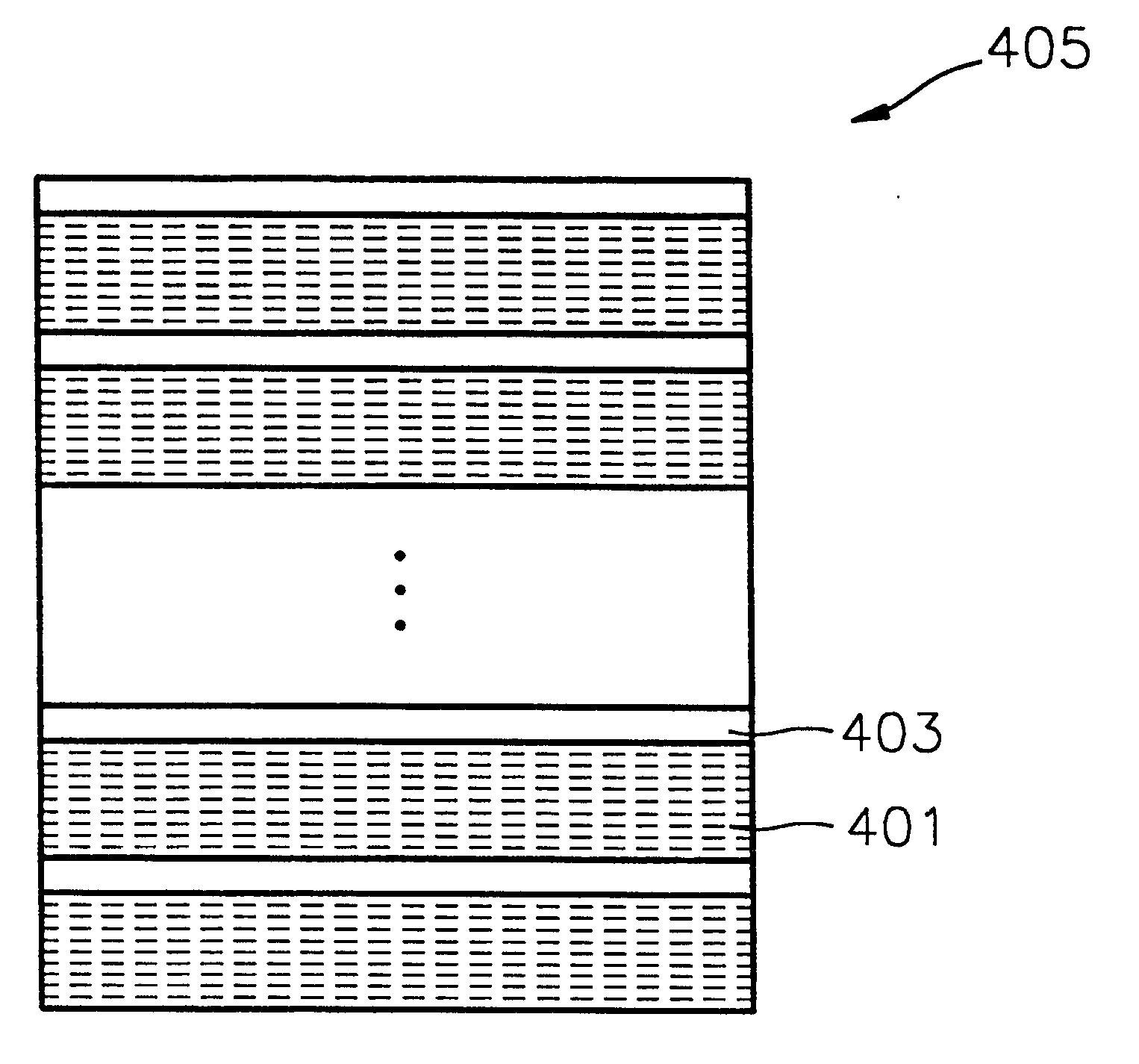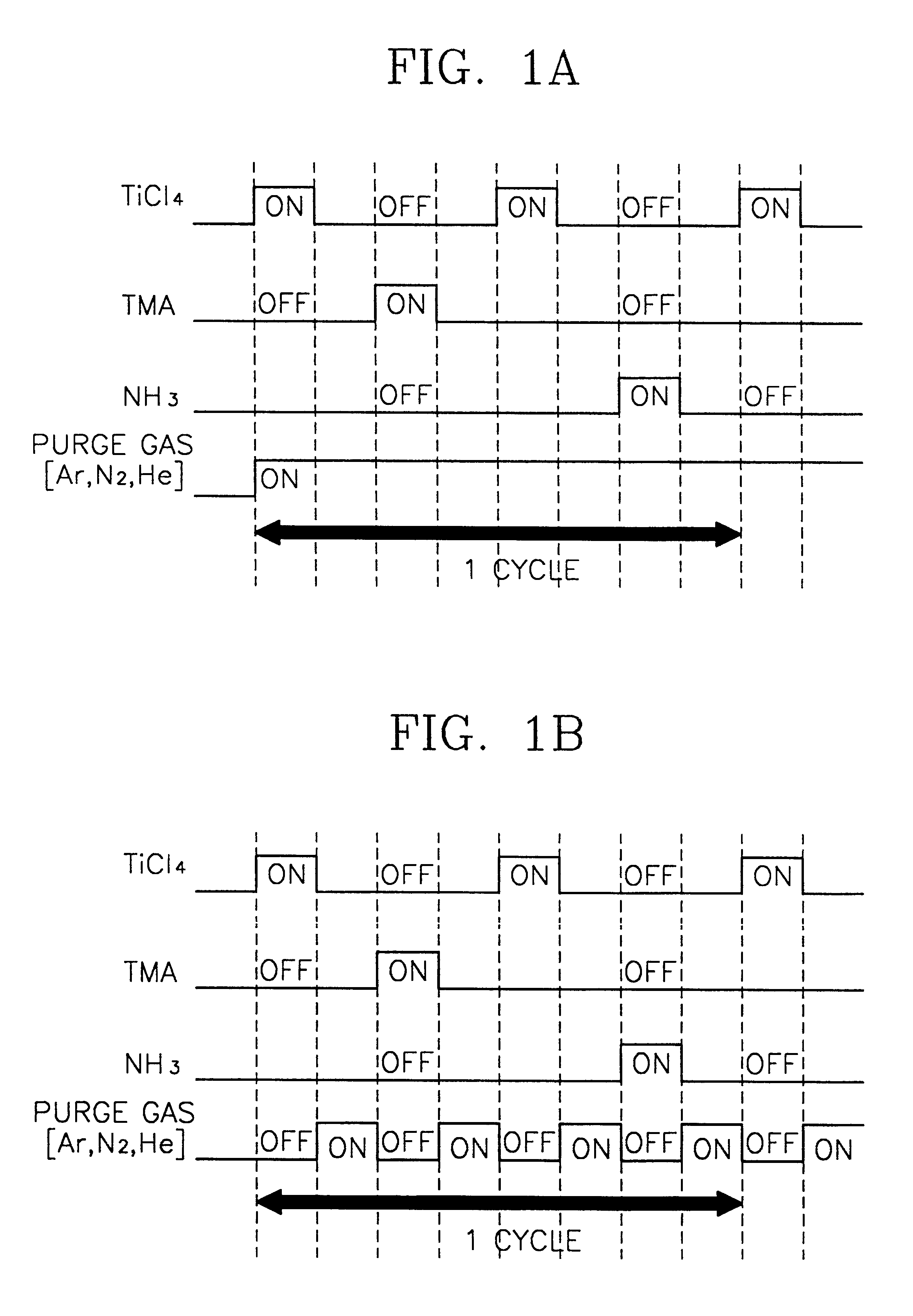Method of forming metal layer using atomic layer deposition and semiconductor device having the metal layer as barrier metal layer or upper or lower electrode of capacitor
a metal layer and atomic layer technology, applied in chemical vapor deposition coatings, coatings, capacitors, etc., can solve the problems of inability to adjust and reproduce composition, inability to act as barrier metal layers, and increased complexity of structur
- Summary
- Abstract
- Description
- Claims
- Application Information
AI Technical Summary
Benefits of technology
Problems solved by technology
Method used
Image
Examples
second embodiment
With reference to FIGS. 8A through 8E, a cylinder type capacitor employing a metal layer formed by atomic layer deposition as an upper electrode will be described. Referring to FIG. 8A, an insulating layer 210 composed of a silicon oxide (SiO.sub.2) film is formed on a semiconductor substrate 104. Subsequently, photo etching is performed to form a contact hole in the insulating layer 210.
Referring to FIG. 8B, the contact hole is filled with a conductive material to form a plug 212. For example, the contact hole may be filled with doped polysilicon to form a poly plug.
Referring to FIG. 8C, a cylinder type lower electrode 214 composed of a metal such as Al or W is formed on the insulating layer 210 and the plug 212 using a photoresist pattern (not shown). Next, a barrier metal layer 216 is formed of TiN or TaN between the cylinder type lower electrode 214 and the poly plug 212 to prevent oxidation of the poly plug 212 during a later thermal process. When the lower electrode 214 is a m...
third embodiment
With reference to FIGS. 9A through 9E, a trench type capacitor employing a metal layer formed by atomic layer deposition as a lower electrode will be described. Referring to FIG. 9A, an insulating layer 310 composed of a silicon oxide (SiO.sub.2) film is formed on a semiconductor substrate 104. Subsequently, photo etching is performed to form a contact hole in the insulating layer 310.
Referring to FIG. 9B, the contact hole may be partially filled to a predetermined depth or not filled at all to give a desired capacitance. When partially filling the contact hole, the contact hole is filled with polysilicon and then wet etching or wet etching combined with chemical mechanical polishing is performed on the polysilicon to leave a polysilicon film 312 of a predetermined thickness at the bottom of the contact hole.
Referring to FIG. 9C, a lower electrode 314 is formed on the insulating layer 310 and on the polysilicon film 312. The lower electrode 314 is formed in a similar manner to that ...
PUM
| Property | Measurement | Unit |
|---|---|---|
| thickness | aaaaa | aaaaa |
| thickness | aaaaa | aaaaa |
| temperature | aaaaa | aaaaa |
Abstract
Description
Claims
Application Information
 Login to View More
Login to View More - R&D
- Intellectual Property
- Life Sciences
- Materials
- Tech Scout
- Unparalleled Data Quality
- Higher Quality Content
- 60% Fewer Hallucinations
Browse by: Latest US Patents, China's latest patents, Technical Efficacy Thesaurus, Application Domain, Technology Topic, Popular Technical Reports.
© 2025 PatSnap. All rights reserved.Legal|Privacy policy|Modern Slavery Act Transparency Statement|Sitemap|About US| Contact US: help@patsnap.com



